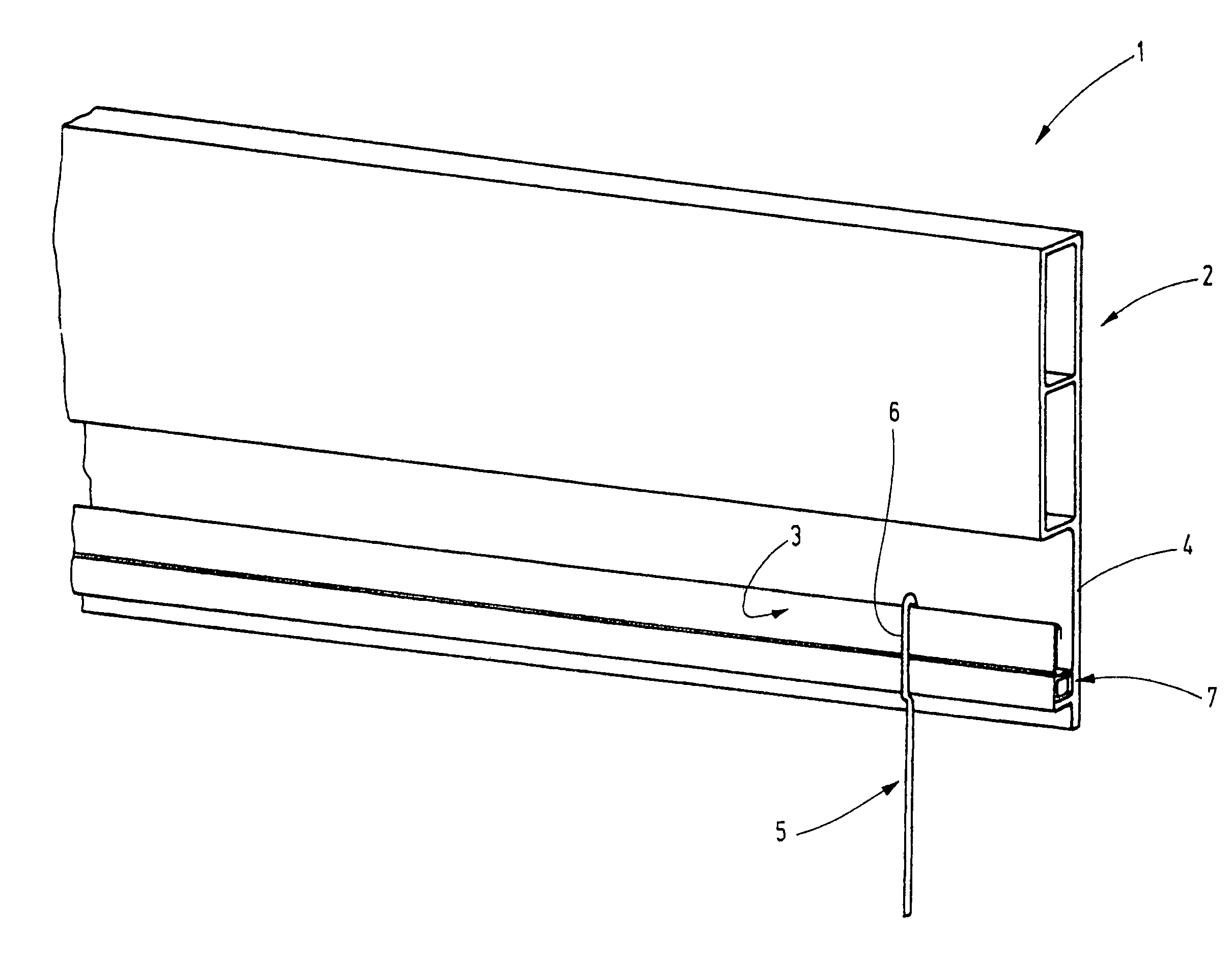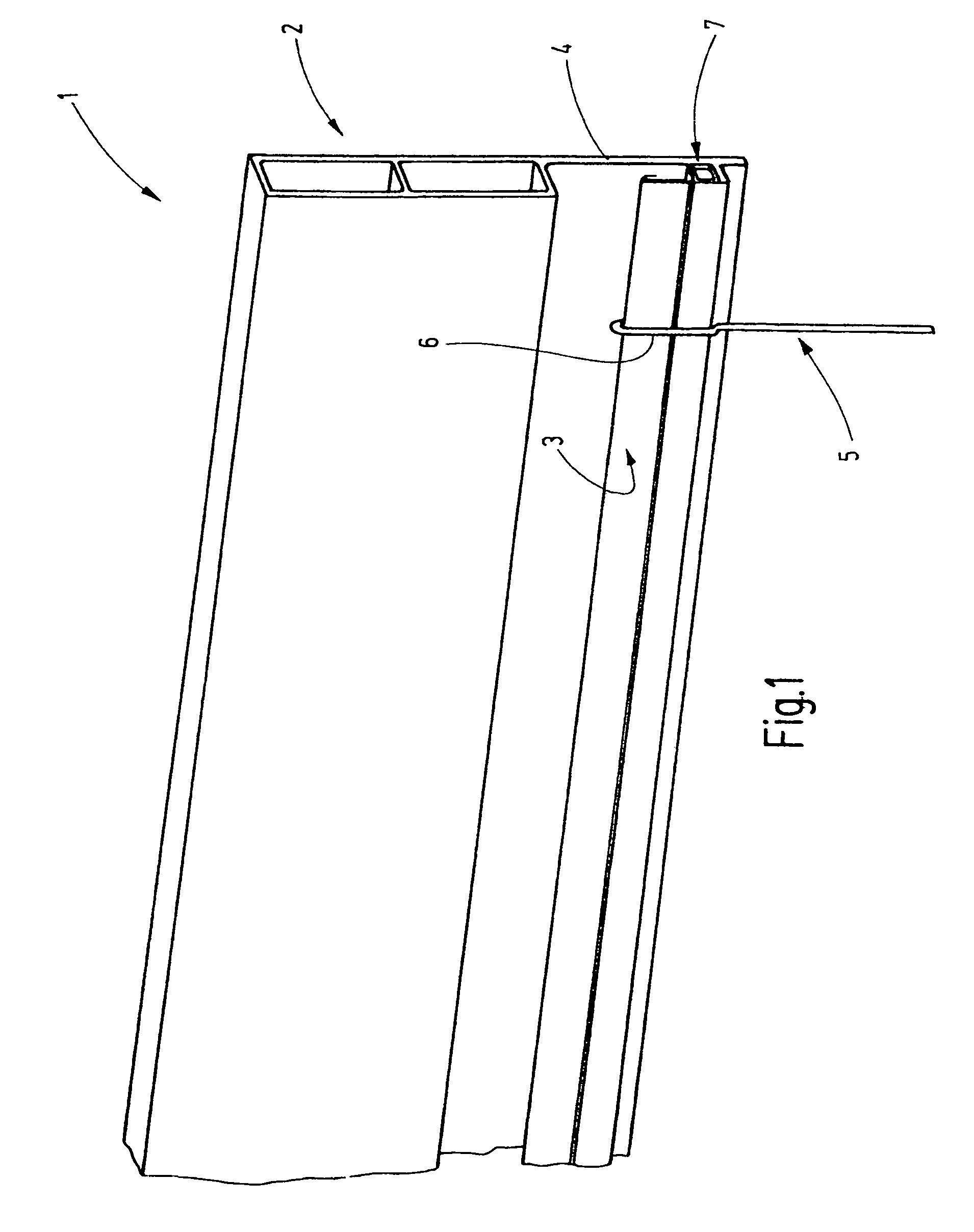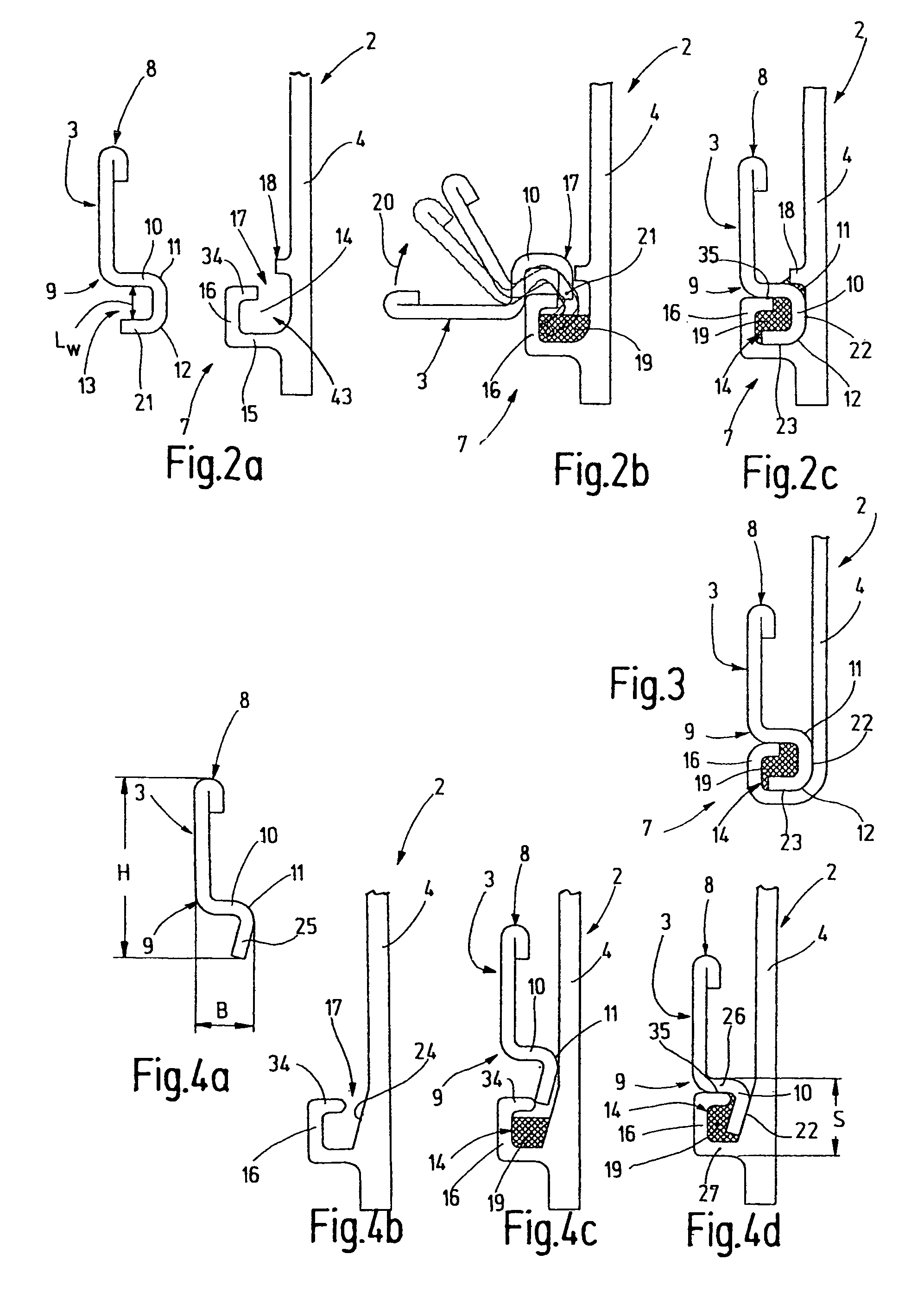Glued heald mounting rail
a mounting rail and glued technology, applied in the field of shaft rods, can solve the problems of unnecessary addition of connecting means such as rivets or screws, and achieve the effects of simple engineering design, improved anchoring of holding section, and simple manner
- Summary
- Abstract
- Description
- Claims
- Application Information
AI Technical Summary
Benefits of technology
Problems solved by technology
Method used
Image
Examples
Embodiment Construction
[0026]FIG. 1 shows a shaft rod 1 of a heald shaft. The shaft rod 1 comprises a rod body 2 and a heald mounting rail 3 that are connected to each other. The rod body 2 may extend over a length of several meters. It provides the necessary vertical stiffness of the shaft rod 1. Preferably, as shown, it consists of an extrusion-molded aluminum profile that has one or more chambers in the form of cavities. The rod body 2 has a strip section 4 that extends vertically away from the chamber profile and is supported on the heald mounting rail 3. However, alternatively, the rod body 2 may be a differently configured body. For example, it may be constructed of one or more parts that are connected to each other by appropriate connecting techniques such as gluing, welding and the like. Thus, said body may be assembled of sheet metal parts consisting of non-ferrous metals, of plastic parts and similar elements.
[0027]The heald mounting rail 3 is preferably a bent sheet metal part. It is used for t...
PUM
 Login to View More
Login to View More Abstract
Description
Claims
Application Information
 Login to View More
Login to View More - R&D
- Intellectual Property
- Life Sciences
- Materials
- Tech Scout
- Unparalleled Data Quality
- Higher Quality Content
- 60% Fewer Hallucinations
Browse by: Latest US Patents, China's latest patents, Technical Efficacy Thesaurus, Application Domain, Technology Topic, Popular Technical Reports.
© 2025 PatSnap. All rights reserved.Legal|Privacy policy|Modern Slavery Act Transparency Statement|Sitemap|About US| Contact US: help@patsnap.com



